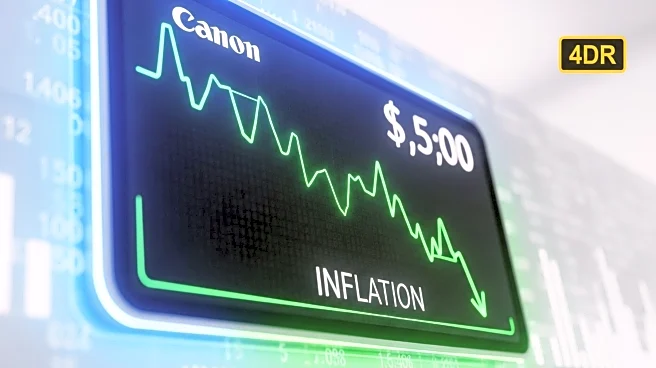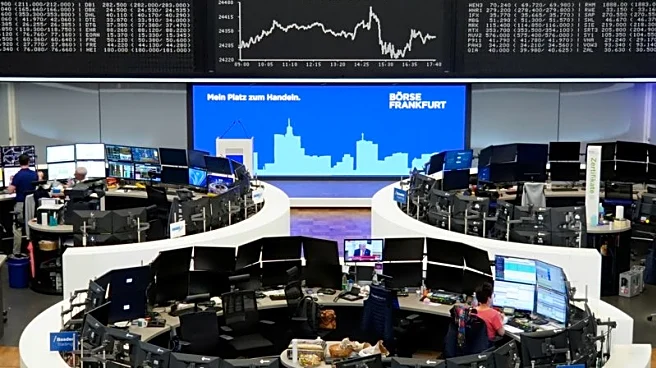What's Happening?
Recent data from the US Department of Labor indicates a fall in the producer price index (PPI) for August, marking the first decline since April. This unexpected drop has fueled speculation about potential interest rate cuts by the Federal Reserve. The PPI data, coupled with revised figures for July, suggests that inflationary pressures may be easing, providing the Fed with room to address weaknesses in the job market. The anticipation of rate cuts has contributed to a rally in Asian equities, with markets responding positively to the prospect of monetary easing.
Why It's Important?
The decline in producer prices and the subsequent market reaction highlight the interconnectedness of economic indicators and monetary policy decisions. Lower producer prices may alleviate concerns about inflation, allowing the Federal Reserve to consider rate cuts that could stimulate economic growth. Such measures could benefit various sectors, including consumer spending and business investment, by reducing borrowing costs. However, the potential for rate cuts also reflects underlying challenges in the economy, such as job market weaknesses, which may require careful management to ensure sustainable growth.
What's Next?
Investors and market analysts will be closely monitoring the upcoming consumer price index report, which could further influence the Federal Reserve's decision-making process. Depending on the consumer price data, the Fed may opt for more aggressive rate cuts to support economic activity. The central bank's actions will likely impact financial markets, with potential implications for interest rates, currency values, and investment strategies. Stakeholders will need to assess the broader economic landscape and adjust their plans accordingly.













